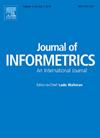中日学者批判教育轨迹之比较分析
IF 3.5
2区 管理学
Q2 COMPUTER SCIENCE, INTERDISCIPLINARY APPLICATIONS
引用次数: 0
摘要
探讨中日两国院士关键教育轨迹的差异及其影响因素,可以为国内高层次科技人才的培养与成长提供有价值的启示。本研究采用“关键成长路径”的概念,从教育连续性、教育机构多样性和留学经历三个方面对中日两国院士的教育轨迹进行比较分析。中国院士通常遵循以下三种教育轨迹之一:(1)学士,(2)学士-硕士-博士,或(3)学士-硕士-工作-博士,而日本院士通常遵循:(1)学士-直接博士,(2)学士-硕士-博士,(3)学士-工作-博士。中国倾向于强调学士-硕士和硕士-博士的连续性,而日本则更倾向于直接的博士连续性。与日本同行相比,中国院士在其教育机构中表现出更大的多样性。大多数中国和日本的院士都没有海外留学经历,尽管这种经历在日本比在中国更普遍。始终如一、持续不断的科研培训是培养精英科学家的重要途径,而保持各教育阶段的连贯性则有助于他们的发展。必须重新评估海外教育在培养国内高层次人才方面的作用,应重视通过加强师徒关系、提高国内培训体系的有效性和应对具体国家的挑战来加强当地人才的培养,特别是在国家研究和教育体系进入更先进阶段的情况下。本研究建立的分析模型为政策驱动的后发国家和其他发展中国家的制度设计提供了有价值的见解。本文章由计算机程序翻译,如有差异,请以英文原文为准。
A comparative analysis of critical educational trajectories of academicians in China and Japan
Exploring the differences in the critical educational trajectories of academicians between China and Japan and identifying the influencing factors can provide valuable insights into the cultivation and growth of high-level domestic scientific talent. This study adopts the concept of ‘critical growth pathway’ to conduct a comparative analysis of academicians’ educational trajectories in China and Japan from the perspectives of educational continuity, educational institution diversity, and study abroad experience. Chinese academicians typically follow one of three education trajectories: (1) bachelor’s, (2) bachelor’s-master’s-doctorate, or (3) bachelor’s-work-master’s-work-doctorate, while Japanese academicians commonly follow: (1) bachelor’s-direct doctorate, (2) bachelor’s-master’s-doctorate, and (3) bachelor’s-work-doctorate. China tends to emphasise bachelor’s-master’s continuity and master’s-doctorate continuity, whereas Japan shows a stronger preference for direct doctoral continuity. Chinese academicians demonstrate greater diversity in their educational institutions compared to their Japanese counterparts. Most Chinese and Japanese academicians have no overseas study experience, although such experience is more common in Japan than China. Consistent and continuous scientific research training is a critical pathway for cultivating elite scientists, while maintaining coherence across educational stages supports their development. The role of overseas education in cultivating high-level domestic talent is important to reassess, attention should be placed on strengthening local talent development by enhancing mentorship, improving the effectiveness of domestic training systems, and addressing country-specific challenges, particularly as national research and education systems reach more advanced stages. The analytical model developed in this study provides valuable insights for institutional design in policy-driven latecomers and other developing countries.
求助全文
通过发布文献求助,成功后即可免费获取论文全文。
去求助
来源期刊

Journal of Informetrics
Social Sciences-Library and Information Sciences
CiteScore
6.40
自引率
16.20%
发文量
95
期刊介绍:
Journal of Informetrics (JOI) publishes rigorous high-quality research on quantitative aspects of information science. The main focus of the journal is on topics in bibliometrics, scientometrics, webometrics, patentometrics, altmetrics and research evaluation. Contributions studying informetric problems using methods from other quantitative fields, such as mathematics, statistics, computer science, economics and econometrics, and network science, are especially encouraged. JOI publishes both theoretical and empirical work. In general, case studies, for instance a bibliometric analysis focusing on a specific research field or a specific country, are not considered suitable for publication in JOI, unless they contain innovative methodological elements.
 求助内容:
求助内容: 应助结果提醒方式:
应助结果提醒方式:


